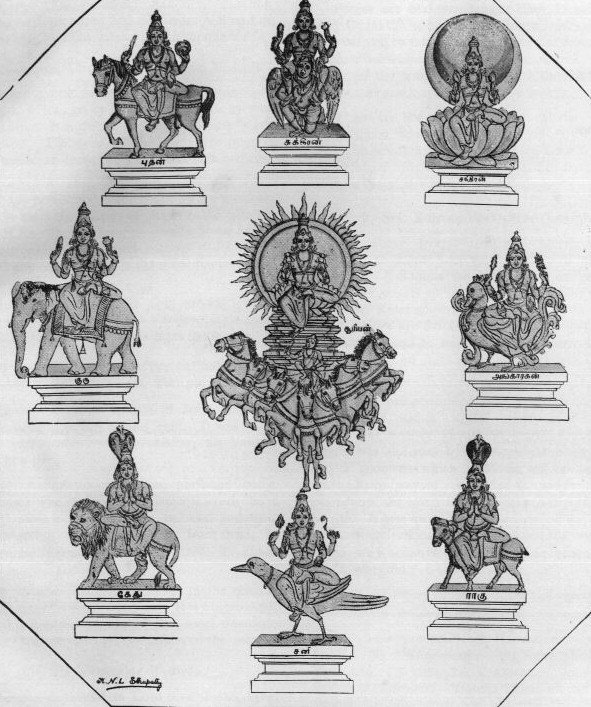Surya Grahan, solar eclipse, is widely mentioned in the Holy Scriptures of Hinduism. There is also an interesting myth regarding the occurrence of Surya Grahan. It happened during the Samdura Manthan (churning of ocean) episode in the Puranas. Rahu (Demon) and Mohini, an incarnation of Lord Vishnu, are the main characters in the incident.
The Amrit (elixir) that was obtained from churning the ocean was cunningly stolen by Ausras (Demons). Lord Vishnu took the form of Mohini, a beautiful damsel, to win back the Amrit. She achieved her mission by enamoring the Asuras, they fell for her beauty and handed over the Amrit to her.
Mohini returned to the Devas and started distributing it. Devas sat in a line and mohini gave a portion to each one of them. Rahu, an Asura, who found out that they were tricked took the form a Deva and sat in the line between Chandra (Moon God) and Surya (Sun God).
When Mohini approached Rahu, Chandra and Surya realized that Rahu was not one among them and soon identified him as an Asura. Mohini soon severed the head of Rahu which flew into the sky. Rahu’s, depicted in the form of a Snake head occasionally, continued to live and decided to avenge Surya and Chandra.
Thus periodically Rahu engages in a war with Surya and Chandra. The Chandra Grahan (Lunar eclipse) and Surya Grahan (Solar eclipse) takes place when Rahu gobbles up Moon and Sun respectively. Surya and Chandra then fights to free themselves.
Surya Grahan and Pregnant Women – What should Pregnant Women do during Suryagrahan in Hindu Religion?
There is lot of fear among many Hindus regarding Surya Grahan (Solar Eclipse) and Pregnancy. Most people want to know about precautions to be taken during Surya Grahanam. The only precaution that you should take is that you should never look at the Sun directly during the Grahan. As a clear cut solution, ancient seers in Hinduism recommend pregnant women remain indoors during Grahan. The mantra chanted during the period is the Santana Gopala Mantra.
Mantra During Surya Grahan

The mantra that is chanted during Surya Grahan by pregnant women is the Santana Gopala Mantra.










